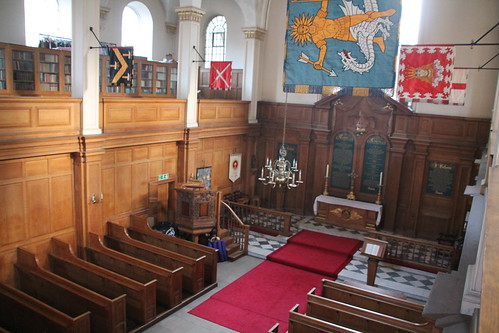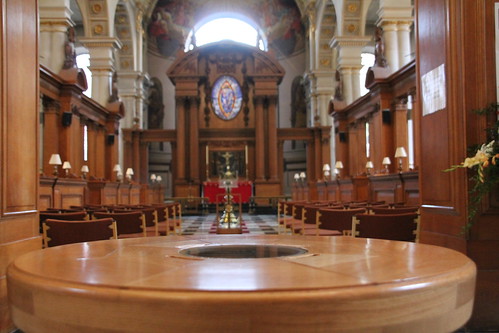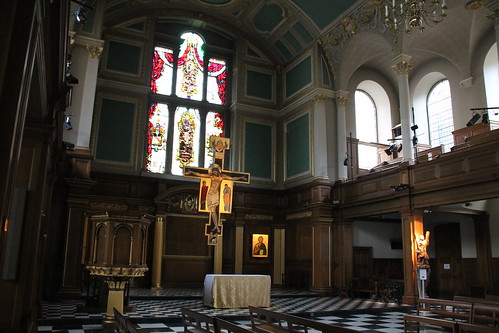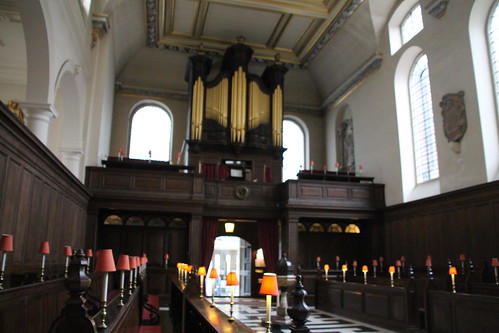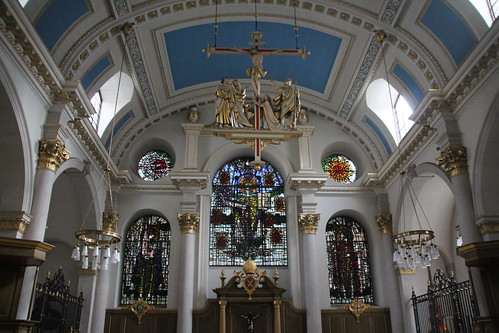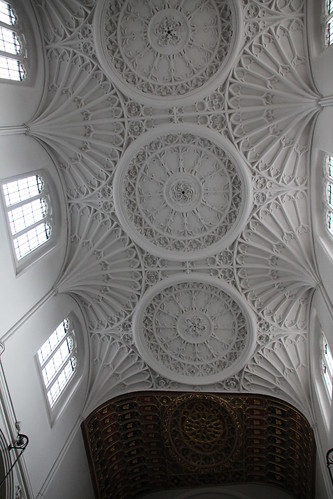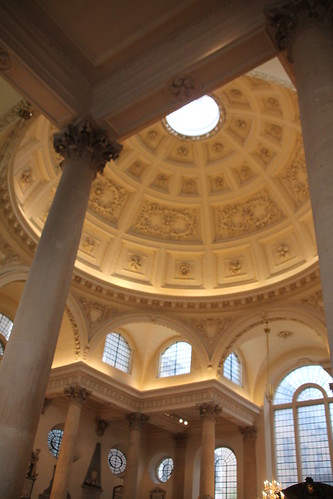Yesterday, I used up one of my remaining holiday days to play tourist in London. Usually, holidays are used for holidays, somewhere else, but occasionally it’s nice to use one to explore my home town. The plan was made to tour the churches of Sir Christopher Wren. After the Great Fire of London in 1666, he rebuilt 51 of them. Not all of them survive though. Some were pulled down deliberately, other’s were hit by the firebombing in the Blitz and were completely destroyed or ended up being restored. In some cases, only a tower or an outline survives. Yesterday, I visited 27 of them. Some were towers only, others were closed, others still welcome visitors. The main was I didn’t visit was St Paul’s Cathedral, that can wait for another day!
Almost all of them are in the City and it’s perfectly possible to walk your way around them. None of them are huge, so don’t take that much time, so if you have a day spare, it’s well worth taking the effort to do a grand tour.
St Andrew-By-theWardrobe. This seems to be a typical Wren church. A blocky oblong, tall arched windows and the alter background that is common, with Lord’s Prayer, the Credo and the Ten Commandments on it. There are balconies, that were pretty common as well.
St Bride’s was one of the more well used churches, the church of Fleet St, with many dedications to journalists and publishers and writers. it also has a dedicated altar set up for journalists killed in action.
St Andrew’s Holburn had a modern cross and icons.
St Vedast shows the other common characteristic of the churches, the organ over the door.
Bow Church, the one whose bells are the centre of Cockney world, was one of the more ornate ones, with a modern rood screen, bright ceilings and gold adornments. The stained glass, found here and in a few others, would not have been part of Wren’s design, as that was definitely Papist and Wren built in the Protestant tradition.
Saying that, he may not have included stained glass, but he was not adverse to prettiness. St Mary Aldermary had one of the most ornate ceilings.
St Stephen Walbrook is regarding as one of Wren’s masterpieces and you can see him playing with host first dome.
I’ve got a few more to go through, including St Paul’s, but that will be another day.
